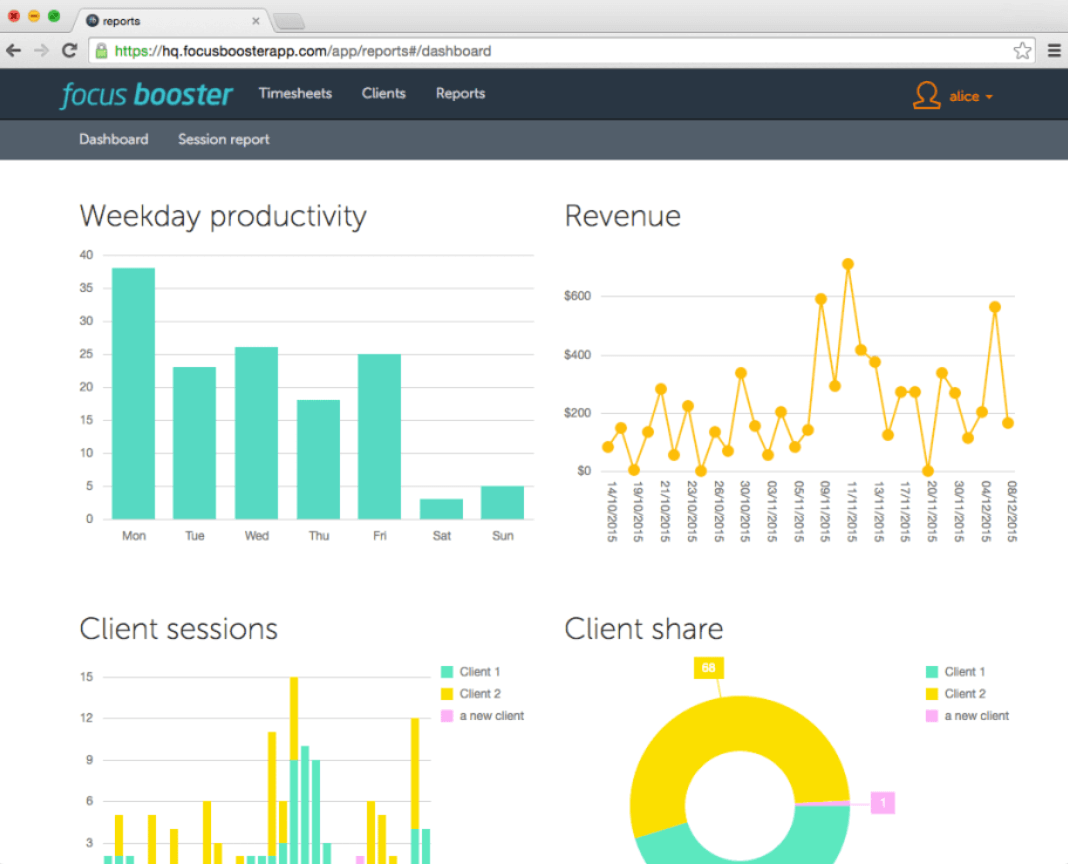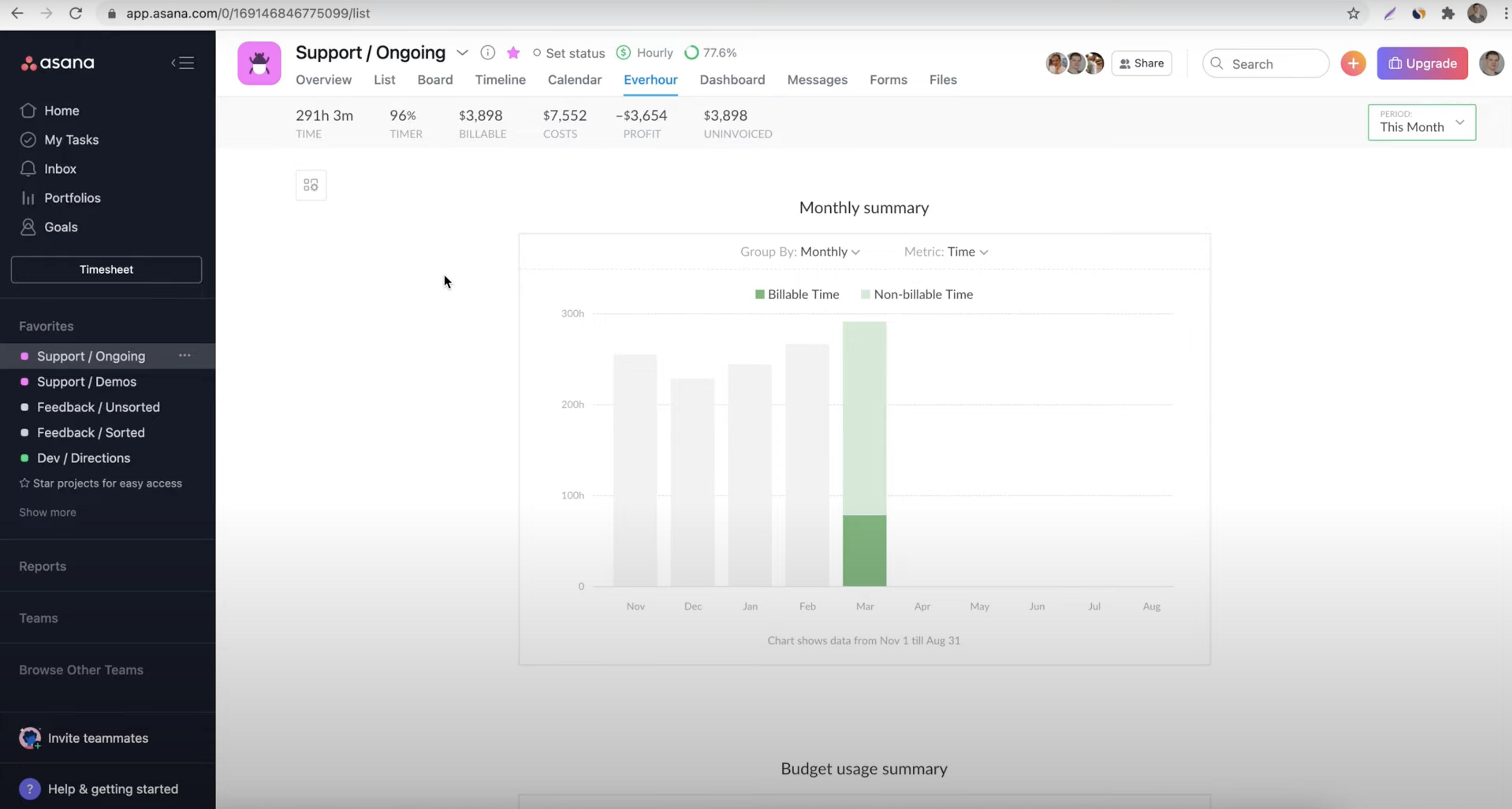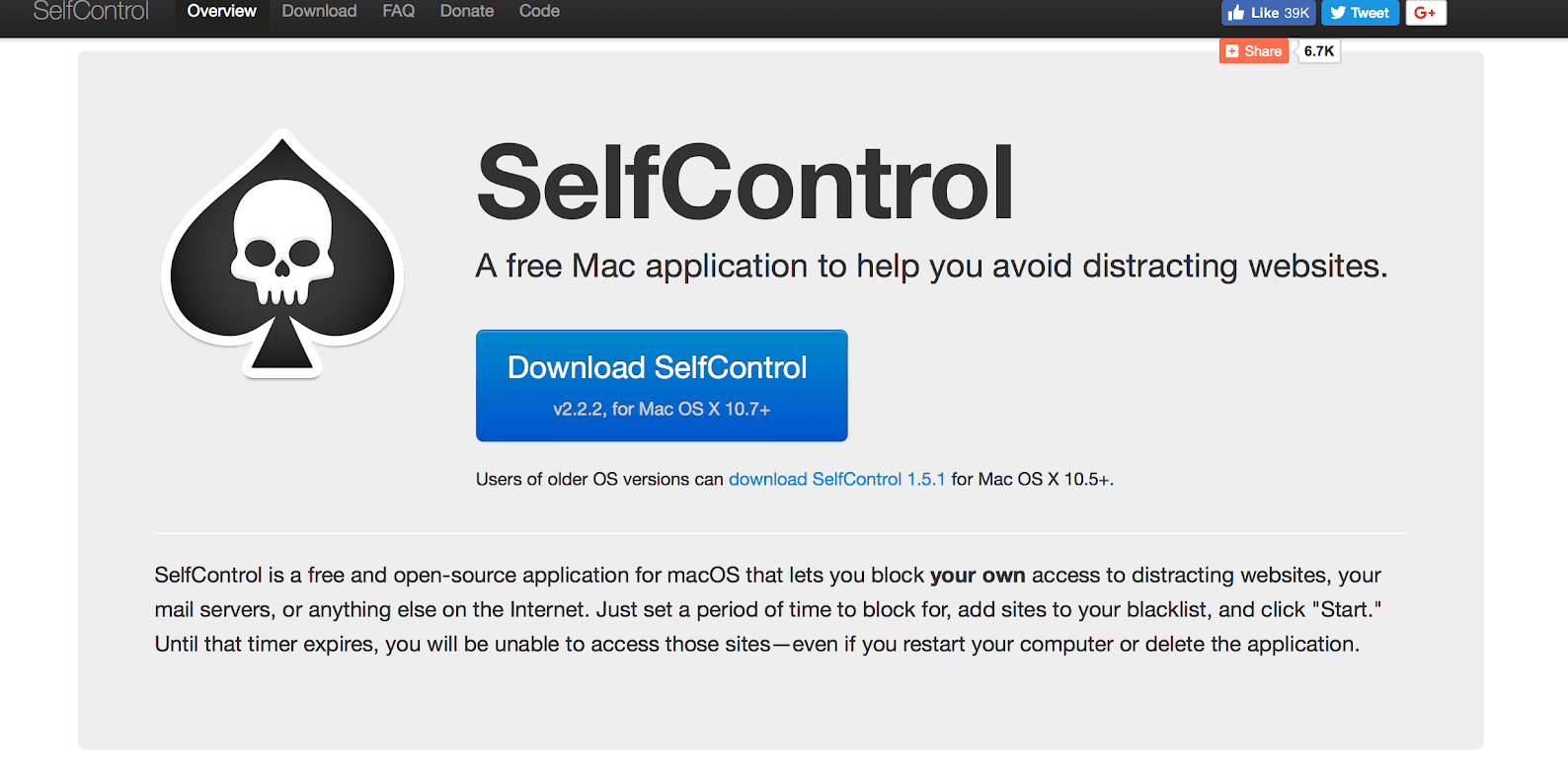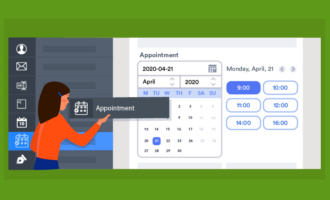Those who make the worst use of their time are the first to complain of its brevity.
Jean de La Bruyère, Les Caractères
We all get the same 24 hours in a day. However, some of us seem to make significantly more of those hours than others.
Time management is the ability to plan and exercise conscious control of our time. It requires “conscious” control because our time goes where our attention goes.
In the words of Idowu Koyenikan, time management is about life management. Before we dive into some effective strategies, let’s review how time management can make or break our success.
These time management strategies will help you get more efficient
- Communicate your priorities
- Embrace peak hours
- Get enough sleep
- Take constructive breaks
- Learn to delegate
- Avoid useless meetings
- Practice deliberate elimination
- Engage in deliberate practice
- Reduce to-do lists
- Master your Inbox
The importance of time management
We may stem from different walks of life, and hold varying opinions on an infinite number of topics, but we can all agree on one thing:
Time is our most valuable currency.
We can always buy more things, but time? That isn’t for sale.
It could be argued that the key to a successful life is spending quality time on the activities that have the biggest impact on our happiness.
That means both doing what we love most — vacationing with family, cycling on Saturdays, watching cat videos — and completing the high-ROI tasks that allow for such activities.
The further one advances professionally, the more effective they must become juggling responsibilities at work and at home.
According to a study sponsored by Staples, 40 percent of American office-workers report experiencing burnout. Heavy workloads, constant pressure and crazy deadlines are commonly cited culprits. Yikes.
In this post, we’ve gathered some of our favorite tips on how to maximize productivity, increase efficiency and reduce work-related stress. Most of these strategies have also helped us grow Jotform to 4.2 million users and more than 130 employees.
An important disclaimer: Just because a specific time management strategy works for one person doesn’t, necessarily, mean it will serve another.
As entrepreneur Chris Winfield discovered when reevaluating his personal relationship with time management:
“I noticed that several different solutions each had a piece of the puzzle. I took those parts that worked for me, and combined them into my own system. Slowly but surely, I developed a formula that would forever change how I work.”
Thus, the key to developing an effective time management strategy is knowing which techniques are worth trying and which ones you should avoid.
Create a personal time management strategy, and you just might surprise yourself with how much more you can achieve, week to week, in the same amount of time.
Let’s get started.
Evaluating time management strategies
When evaluating time management strategies, it’s important to recognize that most tips fall into two categories:
- Project management, or project planning, involves: Goal setting, prioritizing, delegating, scheduling and decision making. Whether you’re a writer, a software engineer or a rocket scientist, these are the skills you utilize at work.
- Attention management, on the other hand, relates to your ability to maintain focus on individual tasks. As I’ve written before, it’s important to know your unique reason(s) for procrastinating before diving into productivity techniques.
Different strategies are appropriate for different time management dilemmas. At any given moment, you could be dealing with a project management issue, an attention management issue or both.
Thus, the key to developing an effective time management strategy is to make it personal. Here’s a summary of the process:
- STEP 1: Take inventory of how you spend your time.
- STEP 2: Compare how you actually spend your time to how you think you spend your time.
- STEP 3: Identify which tasks are “causing the most trouble.”
- STEP 4: Identify why they are a source of trouble.
- STEP 5: Choose an appropriate time management strategy.
A word to the wise: Don’t rush to implement a bunch of tips, hacks and techniques before going through this personal evaluation process.
Fail to take your personal inventory, and you will probably waste significant time experimenting with advice that isn’t useful to you.
Let’s walk through the process step by step.
Cultivating time management skills
Before you can begin cultivating effective time management skills, you must get real with yourself: How are you really spending your time?
According to one study, only 17 percent of the population can accurately predict how long a task will take.
Unsurprisingly, we often have a skewed perception of time passing. And we forget to factor in intermediary activities like walking to the restroom, chatting with colleagues and sitting in traffic.
Assuming you sleep eight hours per night, you have 112 hours per week to devote toward personal and professional tasks.
With that said, there are several ways to conduct a personal time inventory. One of the best methods we’ve come across is from entrepreneur and OKDork contributor Taylor Pearson.
In 2017, the author ran an experiment that completely changed how he now spends his time. Pearson divided his time-tracking exercises into two separate experiments: Organizing time by energy level and organizing time by value.
Both experiments involved organizing activities by categories, assigning colors to those categories and inputting the information into a Google calendar.
His first experiment looked something like this:

In the experiment, Pearson divided his tasks into several professional and personal categories. His inspiration came from an essay written called Maker Time, Manager Time.
The essay, written by Paul Graham, proposes dividing work assignments into the overarching categories of “manager time” and “maker time.”
Manager tasks are conducted within 30-minute to 1-hour blocks; they include objectives like writing emails, making phone calls and holding meetings. Maker tasks are conducted within 2 to 4 hour blocks; they include things like coding software, writing articles and mapping business strategies.
Once Pearson assigned his task categories, he created a mock calendar outlining how he wanted to spend his time. This calendar represented his ideal workweek. It looked something like this:

Pearson made two predictions: 1. He was spending too much time on managerial tasks, and not enough on maker tasks. 2. He wasn’t spending as much time as he would like learning.
Over the course of one week, Pearson adjusted his calendar at the end of each work day to reflect how he actually spent his time. That calendar looked something like this:

What did he learn from his experiment?
- He was 80 percent accurate in predicting how he actually spent his time, but there were some areas that could be improved upon.
- How he spent his time was not how he spent his attention.
In other words, just because Pearson was executing a task didn’t necessarily mean he was focused. For example, he found himself mulling over work challenges while doing bicep curls at the gym. He also found his mind drifting to page layouts while reading a book for leisure.
In Pearson’s second experiment, he went through the same steps. Only, this time, he categorized his activities by sums of value:
- Unique Ability Activities ($10,000/hour work): You have superior skill, energy and passion for continual improvement.
- Excellent Activities ($1,000/hour work): You have superior skill and reputation for these tasks, but no passion.
- Competent Activities ($100/hour work): You meet the minimum standards, but are super bored.
- Incompetence Activities ($10/hour work): You constantly feel frustrated, conflicted or stressed.
The Key Takeaway: By conducting a personal time inventory, Pearson identified where he was falling short in our two time management categories: Project management and attention management. After which, he was able to identify and implement complimentary time management tips for improvement.
You can download your own version of Pearson’s spreadsheet here.
Again, comparing what you actually do every week to what you want to do can be an eye-opening experience. Choose the category system that makes sense for you, and track your time, before implementing the following time management tips:
Top 10 time management strategies
A tool won’t make you productive. Without the skill to support it, a tool is useless.
Time management tips come in two different forms: Tools and skills.
Being a technology company, we are consistently approached by vendors offering us the “latest and greatest” project management tools. Most of these come in the form of software applications, and most of them we ignore. Why?
Because we’ve learned a couple of important lessons over the years:
- Without the skill to support it, a tool is useless.
- And using too many tools is counterproductive to success.
For example, our marketing team purposefully keeps their toolkit small, relying on trusted tools like Zapier and Calendly. Do the programs work as well as they claim? Absolutely, but only if we remember they are just tools.
Thus, an effective time management strategy requires having both the right tools and the right skills in place. In this way, our marketing team members aren’t that different from pop singer Taylor Swift. Just hear us out…
If Swift were to perform a live show with a subpar sound system, she wouldn’t sound as amazing as she usually does. But she would still sound good because she is a highly skilled singer.
Similarly, our marketing team members wouldn’t be as effective without the automated workflows Zapier allows them to create.
However, they would still experience success by leaning on skills like copywriting, ad campaign management and SEO. With that said, some professional skills are universal.
Mastering time management tips like peak productivity, deliberate practice and delegation will help virtually anyone, in any role. Below are the skills our entire team relies on, across all departments, to get work done.
Try practicing the following top 10 time management strategies throughout your work week for maximum productivity:
1. Communicate your priorities
In order to significantly maximize your time, you must take control of it. Oftentimes, that means communicating your priorities to family members, friends and coworkers.
What activities must you get done during the morning hours? What are you doing every Friday at 4pm?
Take me as an example. I’m a huge advocate of following priorities, not to-do lists. For instance, I don’t tackle my emails until the end of the day. My team knows I won’t respond to their messages immediately, but I will reply (fully and thoughtfully) within one business day. Clear expectations give me more control over my time.
These are the things those closest to you should know about. Fail to communicate your non-negotiables, and you will likely get pulled in several directions with little to show for it.
2. Embrace peak hours
When are you most effective? Are you a morning lark, a night owl or somewhere in between? Waking up at 6am won’t make you successful. A significant part of time management is knowing when you work your best.
Despite the fact that most employers embrace a 9-to-5 schedule, many of us don’t feel effective until the afternoon or evening. Sadly, this creates a major disadvantage for employees working on challenging projects outside of peak hours.
Scientists say the body’s circadian rhythms affect sleep cycles, body temperature and hormone levels. This in turn affects peak hours of productivity.
Author Yulia Yaganova suggests rating your energy, focus and motivation at the end of every hour over a 3-week period. Once you’ve identified your peak hours, commit to completing your most important tasks within focused blocks of time.
Also, if you’re the boss, consider implementing flexible work policies. At Jotform, we’ve seen substantial spikes in productivity because of our flex policy. Building an enjoyable company culture, void of rigid work hours, has also helped us attract high-caliber talent and reduce attrition.
3. Get enough sleep
It’s hard to be productive when you can barely keep your eyes open. According to author James Clear, sleep has three primary functions: Restoration, memory consolidation and metabolic health.
“Sleep plays a crucial role in cleaning out the brain each night,” says Clear. “While these toxins can be flushed out during waking hours, researchers have found that clearance during sleep is as much as two-fold faster than during waking hours.”

In other words, sleep is the brain’s way of “taking out the trash.” It also serves the purpose of helping consolidate long-term memories. So, how much sleep does one need?
According to the National Sleep Foundation, adults between the ages of 18 and 64 should get an average of eight hours per night.
With that said, there are plenty of individuals who function best with less than 5 hours per night. Martha Stewart, Tom Ford and Melissa Mayor are just some of the famous CEOs who claim to do more with less. Why the difference in opinion?
Some scientists believe certain individuals are genetically predispositioned to require less sleep. Regardless of your personal number, knowing your ideal number, and getting it, is integral to successful time management.
Here are a few of our favorite tips from our complete guide for getting the rest you need:
- Keep the room temperature cool.
- Install blue-light reducing software on electronic devices.
- Avoid caffeine in the afternoon.
- Wind down before bed.
- Exercise daily.
4. Take constructive breaks
Despite the fact that our workaholic culture tends to villainize breaks, scientific research supports taking them frequently.
According to a study in the journal of Cognition, brief periods of distraction improve both decision-making and creativity. Study leader and University of Illinois psychology professor Alejandro Lleras says prolonged attention to tasks actually hinders performance.
“Constant stimulation is registered by our brains as unimportant, to the point that the brain erases it from our awareness… Our research suggests that, when faced with long tasks, it is best to impose brief breaks on yourself.”
I wrote about how (properly) wasting time at work increases productivity. At Jotform, we are not a big fan of the 80-hour hustle culture and we do encourage our team to incorporate intentional breaks throughout the day.
How many breaks should one take? According to MIT Sloan Senior Lecturer Bob Pozen, breaks should take place every 75 to 90 minutes. This is based on observations of professional musicians who achieve the biggest breakthroughs after practicing for this amount of time.
Here are our favorite tips for taking constructive breaks:
- Don’t engage your prefrontal cortex.
- Do engage in physical activity.
- Do socialize with coworkers.
- Do reconnect with nature.
- Do eat a snack.
5. Learn to delegate
Another time management tip of the insanely productive? Spend the majority of your time focusing on tasks that:
a) You are exceptionally good at, AND
b) You enjoy doing.
However, sometimes delegation just isn’t an option — especially when money is tight or you are the person being delegated to.
If that’s the case, make a note of any tasks you believe someone else could achieve stronger results in less time. Then, slowly begin assigning those tasks to others as you gain momentum.
6. Avoid useless meetings
Meetings are the blight of big companies, and they almost always get worse over time.
We didn’t say it, but Elon Musk did. In a leaked email to Tesla staff, Musk encouraged team members to exit meetings as soon as they recognized they weren’t adding value.
At Jotform, we empower our team members to do their best work without interruption — after all, they are the brains behind the company.
That means reducing the need for meetings as much as possible. We accomplish this goal by positioning teams within private workspaces that are completely self-autonomous.
Not only can team members casually share feedback with one another throughout the day, but they can also avoid getting roped into meetings where they aren’t needed.
Finally, our use of enterprise-messaging software like Slack has substantially reduced our need for weekly meetings.
7. Practice deliberate elimination
In many ways, the essence of effective time management isn’t what you do — it’s what you don’t do. Case in point: Did you know the average American checks their phone 36 times an hour?
And, when they are not interrupting themselves, others are interrupting them every eight minutes. Unsurprisingly, continual interruptions cause people to lose focus.
Deliberate elimination is the practice of being ruthlessly selective as to how much information, input and stimuli we allow into our lives. It may take the form of buying a wardrobe that removes the guesswork of what to wear every morning. Or it could mean not mincing words when communicating with others so valuable time isn’t lost.
The Key: Rid yourself of as many time-sucking situations that don’t significantly contribute to productivity, happiness and well-being.
8. Engage in deliberate practice
Unlike deliberate elimination, deliberate practice is about approaching chosen tasks with complete focus, curiosity and diligence. The term comes from Dr. K. Anders Ericsson, a professor of psychology who pioneered the study of peak performance.
Ericsson’s premise? Those who achieve professional mastery do so because of consistent focus — not genetics. The professor cites Mozart as a prime example of someone who became the best because he practiced long and hard from a young age:
“If you compare the kind of music pieces that Mozart play at various ages to today’s Suzuki-trained children, he is not exceptional. If anything, he’s relatively average.”
So, how does someone like Mozart practice? They push through the lull that occurs after achieving an average level of competence. Anyone who plays a musical instrument has experienced this phenomenon.
You start out learning a few chords or notes. Those individual pieces turn into a few songs. And “practice” becomes you playing the same compositions over and over again.
In order to build upon a skill — not just maintain it — Ericcson recommends devoting structured, thoughtful and strategic time toward the skill on a regular basis. Do this often enough, and you just might find yourself in a desirable state of “flow.”
“Flow is an optimal state of consciousness when you feel and perform your best,” says author Steven Kotler. “It’s the moment of total absorption. Time speeds up or slows down like a freeze-frame effect. Mental and physical ability go through the roof, and the brain takes in more information per second, processing it more deeply.”
Sounds amazing, doesn’t it?
9. Reduce to-do lists
Another pivotal time management practice: Ditch your never-ending to-do list in favor of the “hunter strategy.”
I adapted this time management strategy from Gary Keller’s best-selling book, The One Thing. Think back to our cavemen ancestors: If a hunter didn’t use his time wisely, his family didn’t eat. His daily success was dependent upon him committing to one goal.
This is the mindset our team members embrace at JotForm. Instead of writing down dozens of tasks, we encourage our staff to choose the one thing that MUST get done for maximum impact.
Hint: If you’re having trouble identifying “your one thing,” look toward the thing you least want to do. Once you’ve declared your no. 1 priority for the day, write it on a highly visible post-it note.
The hunter strategy is more effective than the average to-do list for two reasons:
- It increases your odds of completing high-ROI tasks that eventually provide you with more relaxed time to do the menial stuff. AND
- It provides a greater sense of accomplishment than the average list.
While practical in theory, to-do list proponents often overlook our previously mentioned fact: People are terrible at estimating time. This causes unfinished lists that, inevitably, lead to feelings of discouragement.
10. Master your Inbox
In recent years, email has become public enemy no. 1.
Google the phrase “I hate email,” and you will find everything from memes to subReddits to videos on how to reduce Inbox overload.
Some companies have gone so far as to ban internal email all together. With that said, we don’t believe in taking such an extreme stance on the form of asynchronous communication at JotForm. As previously mentioned, email can enhance productivity.
Our team members still rely on internal emails for lengthy discussions that aren’t suitable to enterprise-messaging apps. We also send and receive external emails from clients, prospects and other key stakeholders.
The secret to making email work for you instead of against you? Know when to refrain from sending emails, and know how to write time-effective emails.
Here are our best tips for mastering email:
- Don’t use email for simple, internal questions.
- Set Inbox hours; don’t become a slave to “the woosh” sound.
- Respond to all incoming emails within 24-hours.
- Use clear, succinct subject lines.
- Avoid length paragraphs; hard return every 3-4 sentences.
- Insert explanatory screenshots or videos whenever possible.
- Use colors, highlights and bold to emphasize action requests.
Though there are many time management tips worth implementing, the 10 aforementioned strategies are our favorites. Put them into action, and you may notice yourself experiencing less stress.
Obviously, the interdependent relationship between time management and stress management can not be ignored. The more productive you are, the more relaxed you feel; and the more relaxed you feel, the more productive you become!
With this in mind, let’s explore how stress management activities can compliment time management strategies and practices:
How to support time management with stress management activities

Unless you’re living in a secluded, mountainside cave — where your basic needs are met — you will probably experience stress at some point in your life. Even then, you would still face the contents of your mind, which can be stressful in and of itself.
What exactly is stress? It’s an uncomfortable physiological and emotional response to a perceived demand. Whether that be a crouching tiger, a looming deadline or an imaginary event makes no difference. If your bodymind finds a situation undesirable, it will emote.
Despite how it may sometimes feel, stress isn’t trying to annoy us — it’s drawing our attention toward something that needs to change. Which is why tackling stress like any list item is an ineffective, long-term strategy.
Why settle for managing stress when you can find and eliminate the cause, right? Unfortunately, the process isn’t always straightforward. Most people can quickly identify what is bothering them on the surface: An unsatisfying job, a challenging relationship or a difficult life event. But the source of our problems often has to do with underlying thoughts and behaviors below the surface. And identifying these repetitive patterns can require a decent amount of curiosity, commitment and self-reflection.
Considering we’re a productivity tool company — not a mental health association — we won’t be delving into the intricacies of the mind. However, here are some of our favorite tips for reducing stress and boosting productivity:
Become comfortable saying ‘No’
One of the most common causes of modern stress is over-extension. What causes someone to overschedule themselves to the point of exhaustion? Some individuals appear to be excited about the prospect of participating in everything!
This tendency can be corrected with the simple recognition that there are only 24 hours in a day and a good scheduling system. However, most of us overcommit ourselves because we feel bad saying no to people who care about. Whether it’s a coworker asking for extra project support, or a neighbor wanting a favor, we have an expectation the person will be disappointed by our refusal.
The best way to begin overcoming “people-pleasing tendencies” is to challenge our expectations and thoughts with questions: Will this person really dislike me for saying no? Am I selfish for refusing to do something that will stress me out? The more often you challenge your assumptions, and practice saying no, the easier it will become.
Express yourself
Stress is kinda like the “check engine” light on your car’s dashboard — the longer you wait to address it, the more crap builds up. Perhaps, nowhere is this issue more evident than our persona and professional relationships.
The longer we wait to “have a talk” with someone, the more built-up emotion we accumulate. Again, the best way to circumvent this tendency is to a). Notice when the reluctance to communicate arises and b). Challenge your thoughts about what you think will happen. Most importantly, remind yourself how much better you’ll feel after laying your cards on the table.
Move your body
It’s no secret that engaging in physical activity relieves stress. In fact, scientists say most of us could benefit from engaging in at least 30 minutes of exercise a day. Here are some easy ways to incorporate movement into your daily routine.
- Walk or cycle to the grocery store.
- Park your car in the further parking space.
- Use the stairs instead of the elevator.
- Practice dance tutorials on YouTube
- Revisit a childhood sport you love.
- Buy a jump rope, and keep it next to your desk.
Prioritize leisure
Finally, don’t become so immersed in your daily responsibilities that you neglect self-care. Nurturing oneself is a necessity — not a luxury.
Make time for activities that bring you joy everyday; whether that mean playing the piano, restoring an automobile or knitting the world’s largest blanket. If you find yourself routinely neglecting leisure, you may need to schedule it in your calendar like anything else.
As you practice the aforementioned stress management activities, you’ll find yourself feeling more efficient both at work and at home.
Traditional time management approaches
“Time is what we want most, but what we use worst.” ― William Penn
The concept of time management didn’t exist before the 19th century. It wasn’t until factory jobs began dictating punctuality that managing one’s workload became “a thing.”
Unlike traditional labour, factory gigs required workers to clock in and clock out at specific times. For this reason, punctuality was increasingly seen as a desirable trait in Western society.
During this time, mechanical engineer Frederick Winslow Taylor published one of the world’s first professional development books.
Taylor’s steps for improving productivity might sound obvious to today’s managers — observe a task, break it into smaller actions and teach others how to do it — but his contemporaries loved them.
Fast-forward to the early 1950s, and management consultant Peter Drucker began expanding upon Taylor’s ideas for white-collar positions. He went on to write an impressive 39 books, before predicting the rise of the knowledge worker.
But the subject of time management itself didn’t enter the public arena until 1959. That’s when James McKay proposed that mastering certain time management skills would make us more organized, more efficient and happier in his book “The Management of Time.”
Interestingly, McKay’s book is still widely read today. His most famous line?
Tomorrow you promise yourself will be different, yet tomorrow is too often a repetition of today.
It’s safe to say McKay would agree — the struggle is real. But he might be surprised to learn we now have more than 20,000 time management resources available to us on Amazon alone.
Additional time management resources
There are huge amount of printed and online resources around you can find easily. Along with countless books dedicated to better time management, lots of credible podcasts are publicly available. For those who still count on old-school methods, these suggestions would surely be beneficial and practical.
In order to track your efforts and get some help to stay focused, you can also use time management software.
Examples of major time management software
1. Focus Booster (based on Pomodoro Technique)

Focus Booster is a desktop and mobile app that aims to improve productivity. The app is based on the Pomodoro Technique, a popular time management strategy that divides focused work sessions into 25-minute intervals — referred to as pomodoros.
Pro Tip
Focus Booster is not the only Pomodoro app that you can use. There are plenty of other Pomodoro apps readily available and free.
Workers are advised to separate each pomodoro with a 5-minute break, before stepping away from the screen.
Whether the task is writing a proposal, answering emails or coding a new application, the approach should be the same: One interval of focused work, followed by a short break.
When the technique was originally developed in the 90s, participants tracked their time with tomato-shaped kitchen timers. Focus booster brings the practice into the modern era by combining electronic time-tracking with personalized data reports.
2. Toggl

Want to create a simple timesheet, but hate traditional spreadsheets?
Toggl’s user interface is super easy to navigate, yet complex enough to manage workspaces, clients and projects.
The time management software was originally created with small businesses in mind and comes with more than 100 convenient integrations. Popular programs like Basecamp, Asana and Google Drive play well with Toggl. Available for both Desktop and mobile.
3. Asana

Asana uses the kanban style of project management, which balances tasks, priority levels, and available bandwidth to streamline activity while avoiding the dreaded bottleneck. The software has multiple features that you can use to assign and organize tasks both individually and in a team, and it’s all laid out on a virtual board for easy viewing and management.
Breaking up your project into tasks on a visual board doesn’t just give you a useful overview to understand your project’s flow. Asana also allows you to move and shift priorities as they change (which they often do).
Part of Asana’s feature versatility comes from its compatibility with external tools and extensions. You can use Jotform’s Asana integration to automatically send form submissions and attached files to your Asana boards.
4. Forest

Forest is a unique app that turns time management into a game. The concept is simple: Whenever you want to focus on a task, plant a virtual tree.
If you stay focused, the tree will grow. If you lose focus, the tree will die.
As the name implies, users can grow several trees to eventually create a virtual forest. If you’re someone who is motivated by “quick wins,” and likes gaming, we recommend Forest for a fun experiment.
Fun fact: The organization allows users to spend the virtual coins they earn on planting real trees through a partnership with Trees for The Future.
5. TimeTree

TimeTree is another aesthetically pleasing app that allows families or teams to share multiple calendars. Whether you’re planning a networking event, a sporting event or even a family celebration, Time Tree keeps everyone up-to-date with all updates.
6. SelfControl

Finally, our favorite time management app is SelfControl — an open-source application that allows users to block themselves from distracting websites and mail servers.
The reason the app is particularly effective? Blacklisted sites are inaccessible until the timer sounds — even if you restart your computer or delete the application. If you’re not a Mac user check out Cold Turkey.
Surely there are more software than these. We have also covered some of the other time management apps that will boost your time management level, day and night.





























































































Send Comment:
5 Comments:
More than a year ago
Great post!!!
More than a year ago
I simply use a time management tool to manage my time better. I use kanbantool.com , it's very good.
More than a year ago
hi,
i am very poor at my time managing skills my sister send me this article to improve my time management skills but i was enable to read this at first but then with the help of VPN i read this and really i found this very useful i am applying all the things and now i can make most of my hours this article is really amazing.
bestvpnproviders
More than a year ago
Well done! Great article; it was informative, interesting, concise, full of resources, objective and practical. This could easily be the basis of a workshop.
More than a year ago
Awesome information, i haven't stayed focus on reading an article for 20 minutes straight in a veey long time. Keep up the great work